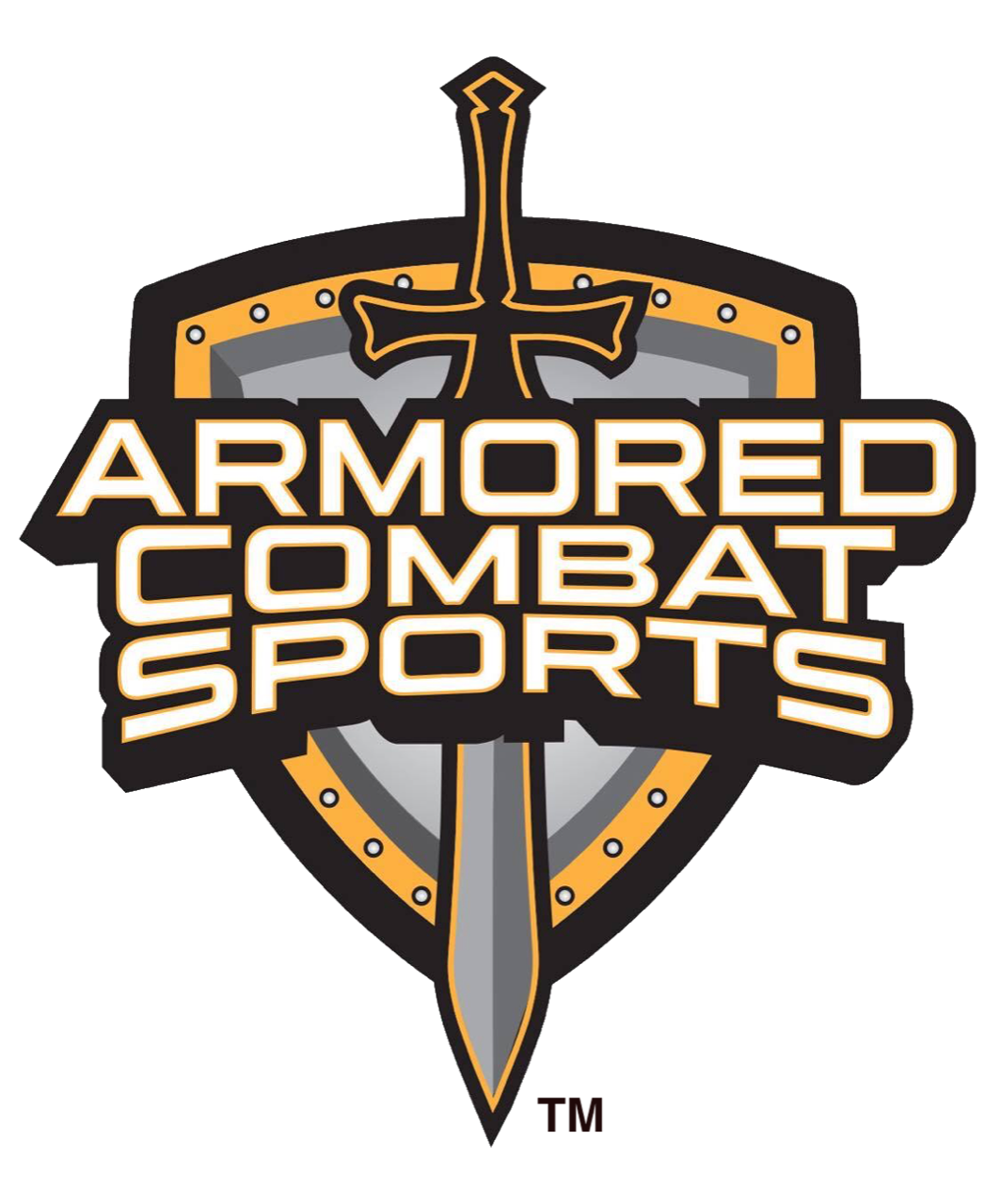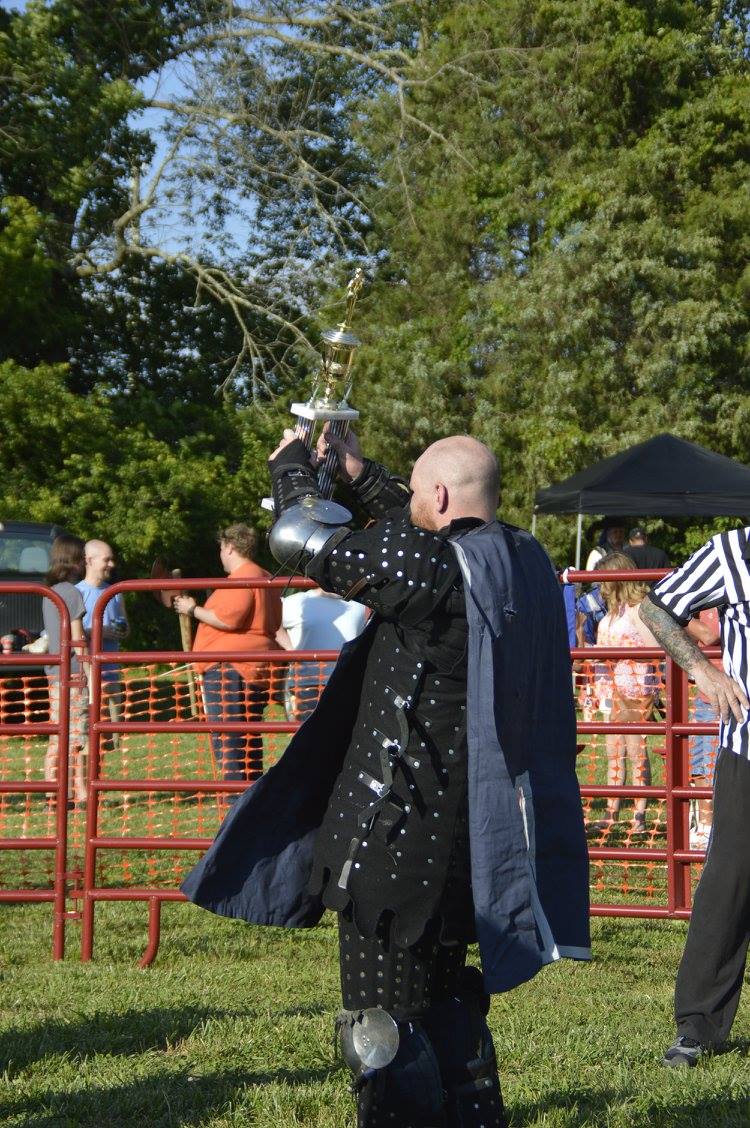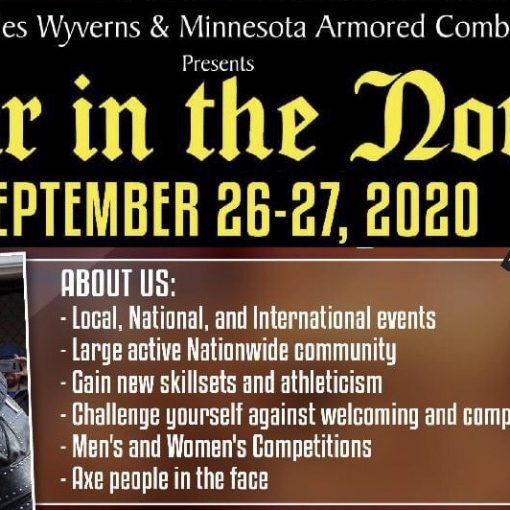By Josuha Kearney

History Channel’s Knight Fight.
As a Medieval Combat instructor one of the biggest questions I get, and one of the easiest to answer, is, “What do I do to get in shape for a fight?” This question is so easy to answer but very few want to hear the answer. Why? Because the answer is: training.
Of course, it’s not that easy. There is a lot that goes into being prepared to fight, and there are multiple different kinds of fighting styles even within armored combat that require different energy systems to succeed. For example, duels and melees have very different physical demands. However, this article is about the style that demands the most out of you: Knight Fights.
No, I’m not referring to the TV show Knight Fight. That was just a series of brutal fights with grinding backstage antics all day. Preparing for something like that is outside the scope of this article. This is about Knight Fights, like the ones at The Knights Hall. Knight Fights are brutal fights—one-on-one, somewhat similar to duels, but with a different “rule set” combined with the intensity and physicality often found in melees—so if you aren’t in excellent physical condition to begin with, I do not recommend taking on Knights Hall style Knight Fights.
To begin, let’s go over the different types of conditioning.
- Cardio. This is your body’s ability to deliver energy to your muscles. This is by far the most important part of conditioning as it is what determines the size of your gas tank. The best exercise, in my opinion, to increase your cardio, is running. A minimum of 60 minutes of running with a heart rate that stays between about 130 and 155 beats per minute.
- Anaerobic fitness. This is your fast twitch fitness system, which is your ability to be agile and explode to deliver force at the point of impact. This is what gives you the ability to lay in those hard strikes, hit that big crosscheck, or nail a power take-down. Anaerobic fitness is increased through: HIIT, (High Intensity Interval Training – workouts), intense bag/pell work, and sparring. Explosive Olympic lifts can also help with this, but should be considered secondary to the other exercises.
- Muscular endurance. This is your ability to apply strength consistently without growing tired or burning out your muscles. Having extremely good muscular endurance will help you a great deal in those grinding grapples. It will allow you to slowly wear down your opponents and shove them to the ground. As much as we try to avoid getting locked into grapples, it happens to everyone eventually. Muscular endurance is your ticket to win them. By far the best way to build up muscular endurance is training in some type of grappling sport. Some of the functionally strongest people, pound for pound, in the world are grapple’rs.
- Recovery. The ability to get back in the fight and go at it again despite leaving everything out on the field in the last round. To continue to fight with no appreciable loss of effectiveness over the entire course of the event. You can build your recovery system up by doing all the above things while monitoring your heart rate. It can be difficult to spar or grapple with a heart rate monitor on, but HIIT workouts, running, pell work, etc. can all be done while monitoring your heart rate. When working on your ability to recover you should never let your HR go below 130.
All these things train aspects of physical fitness that are necessary to succeed in Knight Fights, and anyone can do them. It’s putting them together properly that is the key. Before you even start thinking about competing in Knight Fights you must increase your cardio and muscular endurance up to a high level. This is because cardio and muscular endurance take the longest to build. Anaerobic fitness and recovery are much faster to increase through training, particularly if you are already in good shape. It is my opinion you should be training regularly, running and doing HIIT workouts for at least a year, before competing in a Knight Fights tournament.
That is a year of doing muscular endurance and cardio workouts at least 3 times a week, respectively. “But Josh that means I could be training 6 days a week!” Yeah, and? If you want to be a savage, you must work like one. Two workouts in a day preferably, particularly if you can do one in the morning and one in the evening.
Once you’ve taken a fight you need to go into your fight camp no less than 8 weeks out from the fight, though a 12-week camp is preferable. Fight camp is where the work really starts because that’s when you start working your anaerobic system, which in turn will help work your recovery system. You keep doing all the cardio and muscular endurance work, and then you add in your HIIT workouts.
Before I discuss what my workout looks like to prepare for a Knight Fights tournament, I want to talk about the single best workout I have ever done for steel fighting. I am referring to “The Thousand Strikes” workout, which is done with a heart rate monitor, AFTER a HIIT workout. This workout is 5 rounds of 200 weapon strikes, 20 pushups, 20 sit-ups, and 20 squats, while wearing your helmet. The rounds last however long it takes to complete all exercises and your rests last until your heart rate reaches 130bpm. Once you’ve done all 5 rounds you will have hit 1000 weapon strikes, done 100 pushups, sit-ups, and squats. This workout is intense.
Now that I’ve gone over that, this is what my training for my Knight Fight at War Camp 2018 looked like.
- Running, 1 hour, HR between 130-155 bpm, 3 times a week.
- Brazilian Jiu Jitsu, 30 minutes, 2 times a week. (This is the sparring session. Class usually lasts 90 minutes.)
- Kickboxing, 30 minutes, 2 times a week. (This is sparring/bag work. Class usually lasts 90 minutes.
- HIIT (KnightFit Tabata), 2 times a week.
- Thousand Strikes, 2 times a week.
- 1 Full day of rest per week.
It’s also important to have a rest day, so make sure you add at least 1 full day a week of rest to your workout schedule. That means I had 11 workouts to do in 6 days. That was brutal, and I was generally miserable, particularly with a day job and family obligations to contend with as well. There is a silver lining however: twice a month, when you’re feeling burned out, you can take an extra rest day. Whatever workouts are schedule for the day are canceled and do not need to be made up. You never want to go into a fight stale, so these roaming rest days can help with that.
I hope everyone gets something good out of this article. If you enjoyed it, please send some likes and follows my way.
Personal:
Instagram – The Real Josh Karnage
Instagram – Ironhide Academy
Facebook – Ironhide Academy
Facebook – The Real Josh Karnage
Facebook – Ironhide Academy – Medieval Combat










